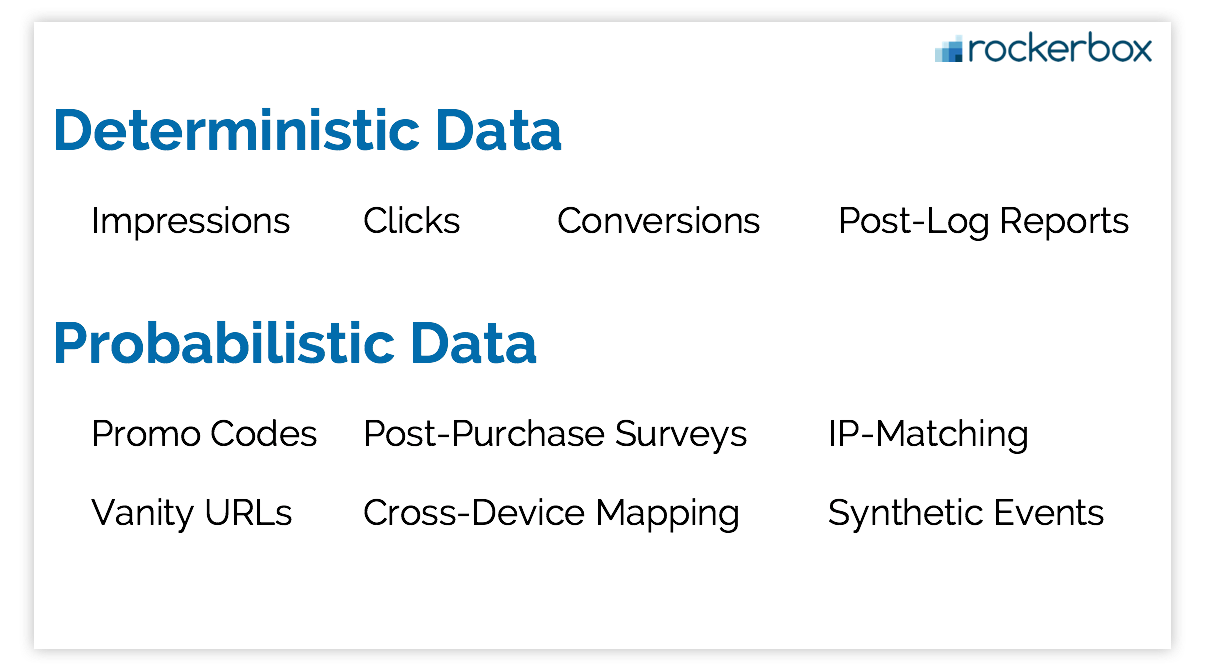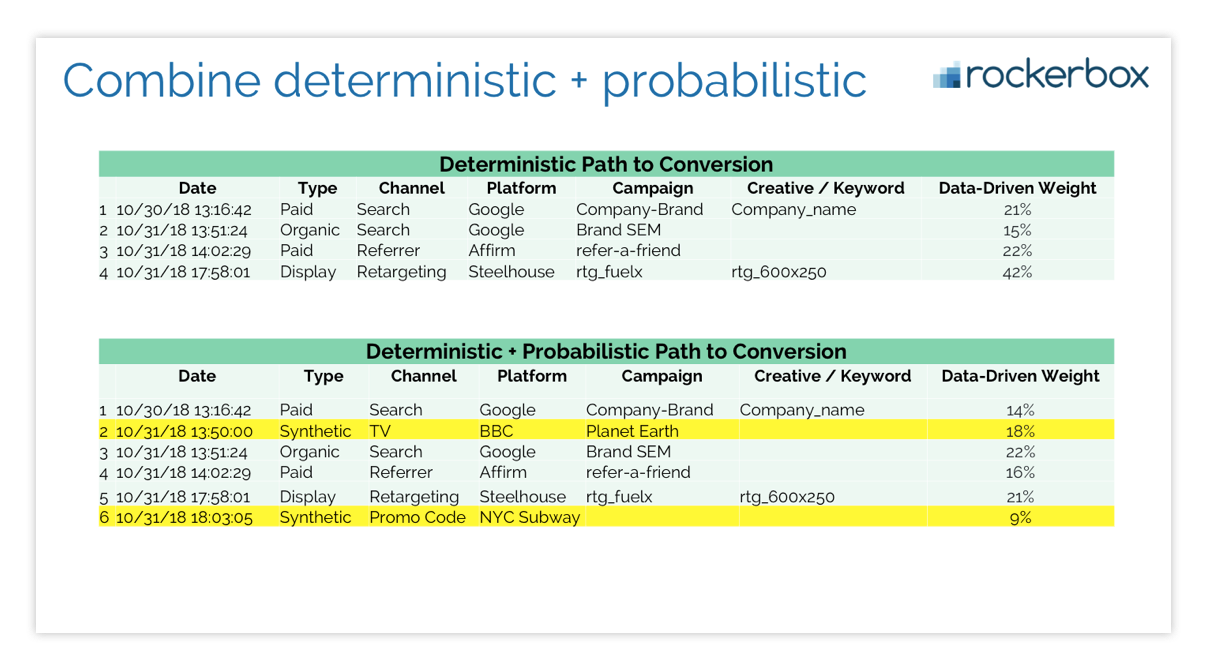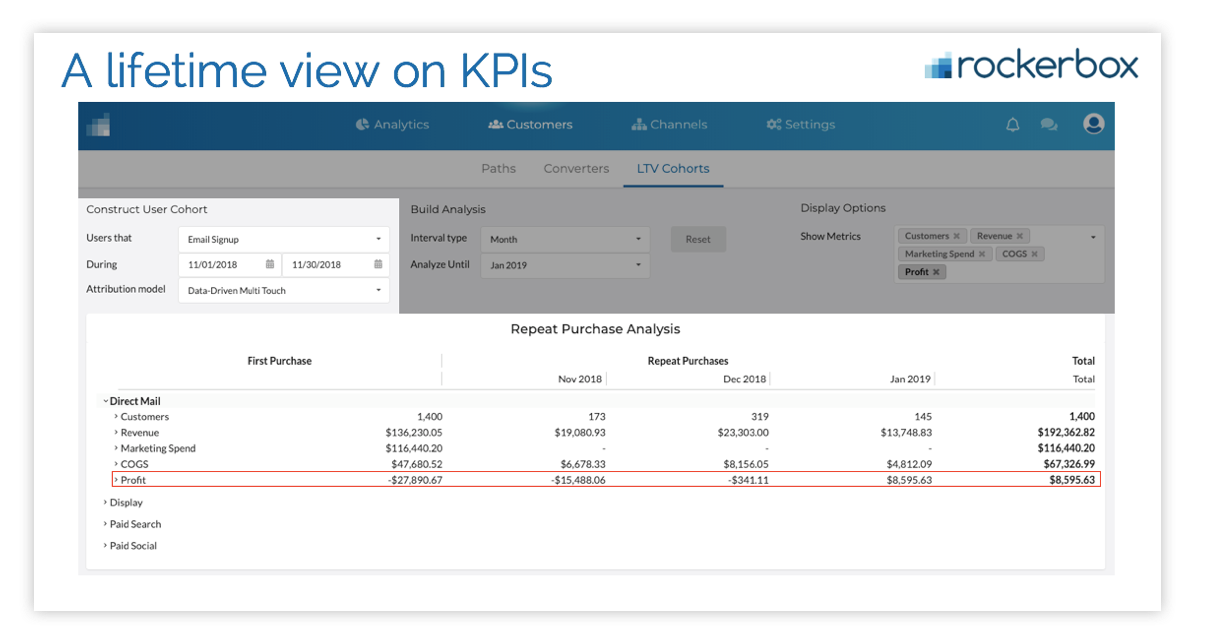Rockerbox recently sponsored Grow Commerce New York: a full day connecting with over 500 direct-to-consumer brands.
I watched Ron Jacobson (our Co-Founder & CEO) give a keynote on best attribution practices, and I think the takeaways from it are useful to any type of marketer.
Watch video below or skip ahead to my takeaways.
Watch time: 14:13
So, what did I learn exactly?
1. There’s a huge shift in where D2C brands are spending their ad dollars
Ad dollars are moving from “trackable” channels (like Facebook, Google and programmatic) to “harder-to-track” offline channels (like TV, podcasts, radio and direct mail).
Why is this happening? Think back ten years ago when some of the initial D2C brands (like Warby Parker and Bombas) caught their first wave of success. Soon after, VCs showed up and started flowing money into the industry — wanting to capitalize on what they saw succeeding.
More money in the industry meant more D2C companies founded. These companies started heavily investing in the same “trackable” channels that had worked for everyone else.
The result of everyone’s ad dollars in the same channels? These channels became a lot more competitive and expensive, eventually pushing us all to invest ad dollars elsewhere.
2. How to adapt to the change
If you’re like me, you don’t love putting effort towards anything you can’t measure. Investing in untrackable channels can seem like opening the floodgates to chaos.
But if you understand the right way to think about these channels, you can be much more confident using them.
Here’s how to do that exactly:
1. Accept the truth: perfect tracking is fiction
The faster you accept this, the faster you can realize there’s still a ton of opportunity that comes with imperfect tracking. You can’t let perfection be the enemy of good.
This is something I struggle with as a marketer. I want things to be perfect, but that of course is paralyzing. When I let go of my need for perfection, I’m able to try more. Sure I fail more, but I also get more shots and can move faster.
2. Combine deterministic and probabilistic data
I now understand that deterministic data relies on definitive proof to identify users. It includes things like clicks and conversions. Probabilistic data relies on probability to identity users. Both types of data are hugely important.

When you combine both types of data, you can see what a realistic path to conversion looks like and which channels are working.
Below is a good view of what this looks like. Check out how each touchpoint’s “weight” is adjusted when the probabilistic touchpoints are added to the conversion path.

3. Validate with testing and incrementality
Testing will start to give you a sense of incremental CPAs, which can then be used as inputs to a multi-touch model.
It’s tough to properly structure tests (Rockerbox is building a product around this), but you should make sure you’re not doing holdback groups for five different channels in the same state in the same day.
4. Take a lifetime view on KPIs
What’s the value of an email signup via direct mail three months down the line? I now understand that by constructing cohorts and bucketing every user, I can start looking at revenue associated to these cohorts over time. It’s also smart to track how KPIs change over time for new vs. repeat customers (if it makes sense for your business). The image below is a good example of what this could look like in practice. Succeeding in this ever-competitive advertising world is definitely challenging. But if you're thinking about attribution correctly, staying competitive becomes easier.
Succeeding in this ever-competitive advertising world is definitely challenging. But if you're thinking about attribution correctly, staying competitive becomes easier.
 Google
Google Facebook
Facebook Instagram
Instagram TikTok
TikTok Snapchat
Snapchat Reddit
Reddit Pinterest
Pinterest


.png?width=50&height=56&name=medal%20(1).png)







%20(2)-Aug-08-2024-06-05-17-6203-PM.png?width=435&height=200&name=Blog%20Headers%20-%20New%20(1200%20%C3%97%20800%20px)%20(2)-Aug-08-2024-06-05-17-6203-PM.png)
%20(4)-1.png?width=435&height=200&name=Blog%20Headers%20-%20New%20(1200%20%C3%97%20800%20px)%20(4)-1.png)